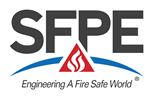FEMTC 2022
Investigation Of Smoke Characteristics By Photometric Measurements 
Kristian Börger - Bergische Universität Wuppertal
Abstract
Visibility in case of fire can be predicted from CFD simulations as a major tenability criterion within the scope of performance-based safety concepts. Indications that light extinction might be significantly overestimated by numerical fire models have been confirmed by experimental investigations and simulations with FDS. For this purpose, a novel photometric approach was applied on EN 54 test fires among established measurement methods for the determination of spatial and temporal resolved light extinction coefficients. Common DSLR cameras capture the relative change in the intensity of individual light sources (LEDs) due to fire smoke. Based on geometrical optics as well as the Beer-Lambert's law, an inverse model deduces local values of the extinction coefficient, assuming a homogeneous smoke layering. Both, the quality, and the scope of the experimental setup have been incrementally optimized and extended. Potential sources of error were examined, such as temperature-related effects on the LEDs' intensity. Besides the spatial resolution of the smoke density, the focus of recent investigations is on the in-depth smoke characteristics. For this reason, light obscuration was assessed at multiple wavelengths. Furthermore, aging of aerosols was analyzed by measuring the change in particle size distribution at different heights of the smoke layering. The presentation introduces an innovative approach for the acquisition of reliable data to validate the prediction of smoke propagation by numerical fire models. The extensive dataset of the latest investigation covers n-heptane pool fires as well as solid and smoldering fires according to EN 54.
Presentation
Resources
| Paper | Presentation | ||
|---|---|---|---|
| HTML | HTML | ||
| Resources Archive File (.zip) | |||

